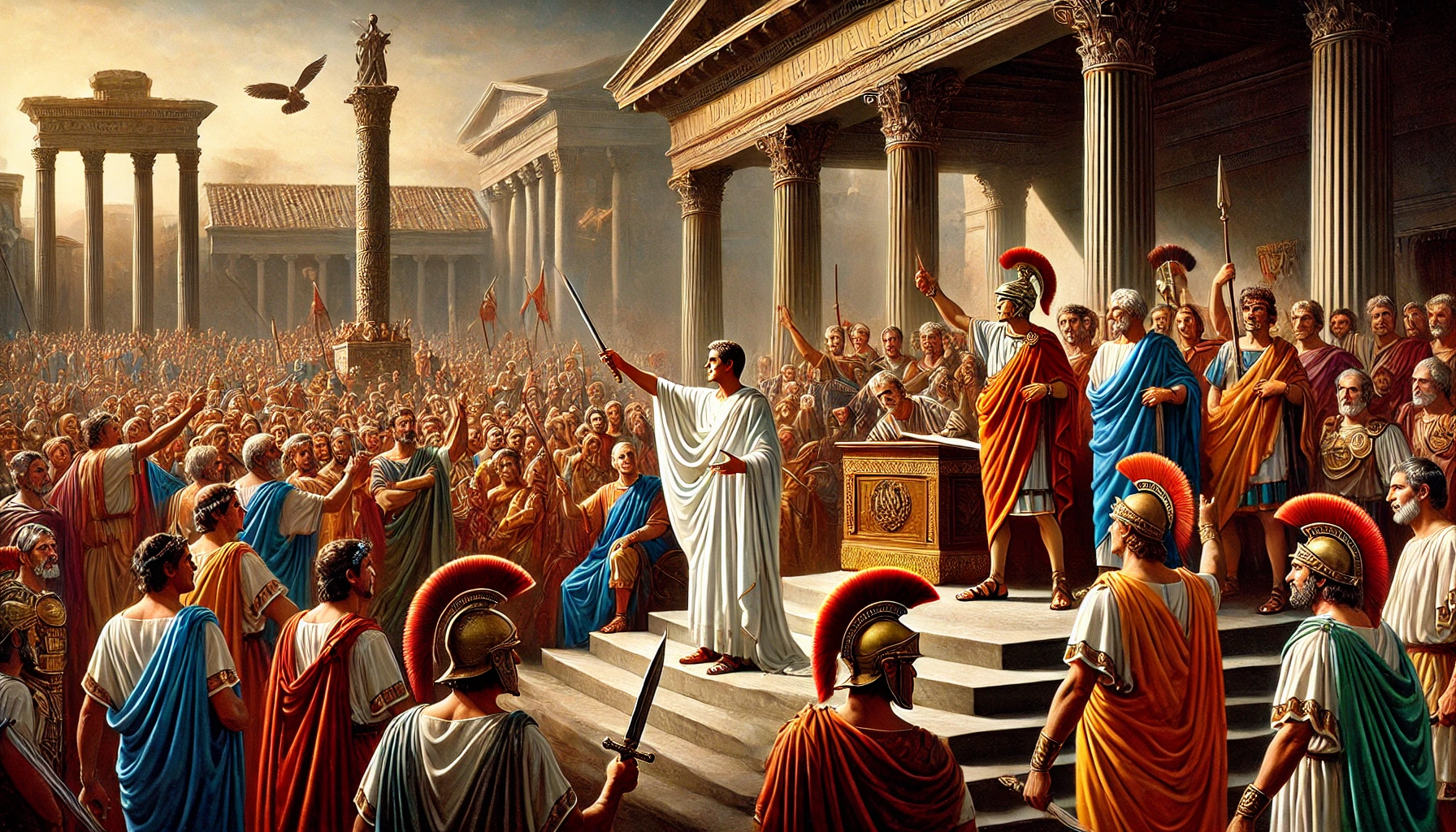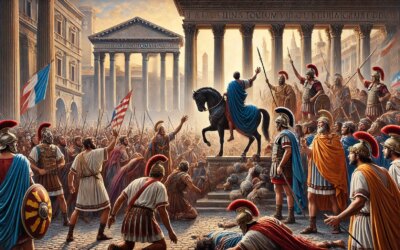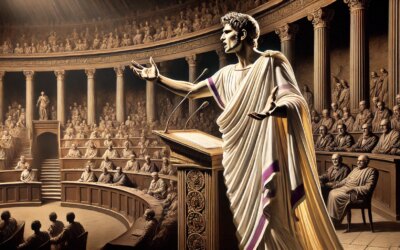The End of Rome’s Monarchy
For centuries, Rome was ruled by kings, but by 509 BC, the monarchy had become despised. The last ruler, Lucius Tarquinius Superbus—known as Tarquin the Proud—was notorious for his tyranny, ignoring the Senate and governing through fear. His downfall came not just from his oppressive rule but from the shocking crime committed by his son.
The Revolt Against Tyranny
The spark that ignited revolution was the assault of Lucretia, a noblewoman, by Tarquin’s son, Sextus. Her tragic suicide in response to the dishonor led her family and allies to call for justice. Lucius Junius Brutus, a prominent Roman noble, led the charge, rallying the people against the monarchy.
The Expulsion of Tarquin the Proud
Brutus and his supporters called upon the Roman people to reject the Tarquin dynasty. In a dramatic gathering at the forum, they declared Rome would no longer be ruled by a king. The Senate and citizenry sided with the revolution, and Tarquin, who was away on a military campaign, was permanently exiled. His attempts to reclaim the throne through alliances and battles failed, marking the end of the monarchy.
The Creation of the Republic
With the monarchy abolished, the Romans established a new system of government: the Republic. Instead of a king, power was distributed between two consuls, elected annually, ensuring that no single leader could become a tyrant. The Senate gained authority, and laws were codified to maintain order. This system would define Rome for centuries, shaping the course of Western political history.
The Legacy of 509 BC
The overthrow of Tarquin was more than a political shift—it was a declaration of Roman values: liberty, civic duty, and resistance to tyranny. The Republic would endure for nearly 500 years, influencing democracies to this day. The story of Brutus and the founding of the Republic remains a foundational legend of Rome, symbolizing the people’s power to determine their own fate.






